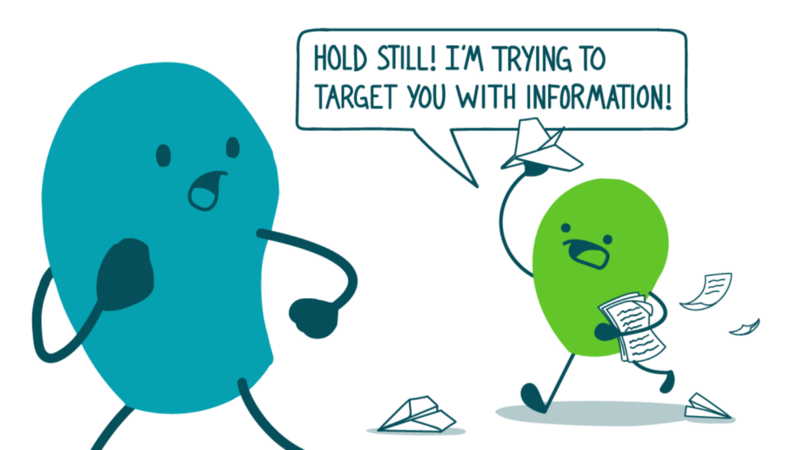
Here at We ❤ Health Literacy Headquarters, we’re no strangers to the terms “target audience” and “target population” — they’re health comm bread and butter! But when you think about it, they aren’t such a great way to refer to… well, anyone.
“Target” sounds a tad aggressive, like militaristic terms we try to avoid. And it may make people feel they’re being, ahem, targeted — rather than prioritized, which is what we actually mean! This connotation can get especially dicey when you’re writing about historically underrepresented communities.
Of course, your end user may not ever set eyes on the doc where you call them your “target audience” — or anything else. But stranger things have happened! And as our grade-school teachers liked to say, if you wouldn’t use a word when talking to someone, it’s best not to use it when talking about them.
So how do we talk about the people we’re trying to reach in our internal communications, conference poster presentations, and the like? We’ve got a few ideas — and they’re super simple swaps!
Try this:
- Our primary audience for the campaign is Black adults ages 25 to 44.
- We’re prioritizing people with heart disease in our outreach efforts.
- The social media content was very effective at reaching the intended audience.
Not that:
- Our target audience for the campaign is Black adults ages 25 to 44.
- We’re targeting people with heart disease in our outreach efforts.
- The social media content was very effective at reaching the target audience.
The bottom line: Ditch “target” audience — try “intended,” “priority,” or “primary” instead.
Browse recent posts